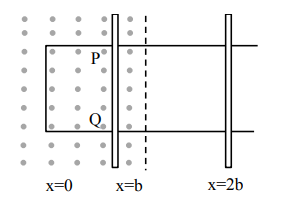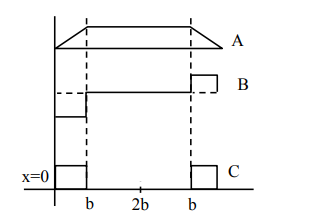The arm $\mathrm{PQ}$ of a rectangular conductor is moving
from $x=0$ to $x=2 b$ outwards and then inwards
from $x=2 b$ to $x=0$ as shown in the figure. $A$
uniform magnetic field perpendicular to the plane
is acting from $\mathrm{x}=0$ to $\mathrm{x}=\mathrm{b}$. Identify the graph
showing the variation of different quantities with
distance:


Correct Option: , 3
As rod moves in field area increases upto $x=b$ then field is absent and again flux is generated on return journey from $x=b$ to $x=0$. Thus plot $A$ for flux.
$\Rightarrow \mathrm{e}=-\frac{\mathrm{d} \phi}{\mathrm{dt}} \Rightarrow$ curve $\mathrm{B}$ for emf
$\Rightarrow$ Power dissipated $=$ vi $\Rightarrow$ curve $C$ for power dissipated
Click here to get exam-ready with eSaral
For making your preparation journey smoother of JEE, NEET and Class 8 to 10, grab our app now.
